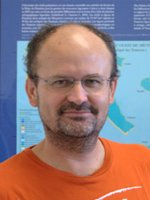#PUBLICATION Conservation planning in the Pacific Ocean
Posted by admin | March 8, 2021

Systematic conservation planning (SCP) is a toolbox that allows for the systematic analysis of space and the selection of priority conservation areas that meet the set objectives (e.g. protection of a certain area of each habitat). In particular, it makes it possible to orient conservation actions, while minimizing a certain number of constraints for the stakeholders (socio-economic costs, size of the reserve, compactness of the network, etc.). Thirty-four studies of CSPs on different islands in the Pacific Ocean were identified and reviewed.
It was found that PSC scenarios were often based on biodiversity representation type objectives and opportunity cost type costs for fishermen. PSC is evolving into increasingly sophisticated scenarios, following the need to maximize resilience and connectivity in order to mitigate the impacts of climate change. However, for a number of studies, the proxies and models used have not been validated, resulting in information quality issues. Finally, traditional management by local communities has motivated PSC applications specific to the Pacific region. Nevertheless, several characteristics of the Pacific islands are not taken into account, including invertebrate fisheries, ciguatera and mariculture.
Fourteen recommendations are proposed to improve the robustness of the scenarios, to integrate the specificities of the Pacific islands, to make the modeling more reliable and to improve the use of PSC for island management.
André, L. V., Van Wynsberge, S., Chinain, M., & Andréfouët, S. (2021). An appraisal of systematic conservation planning for Pacific Ocean Tropical Islands coastal environments. Marine Pollution Bulletin, 165, 112131.
